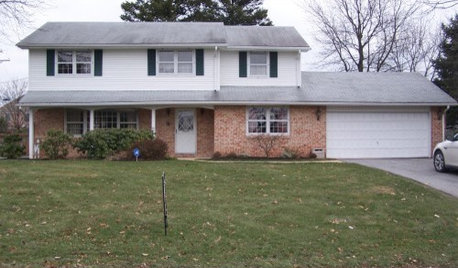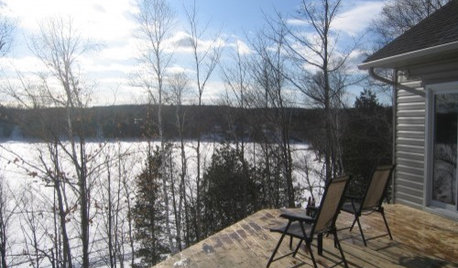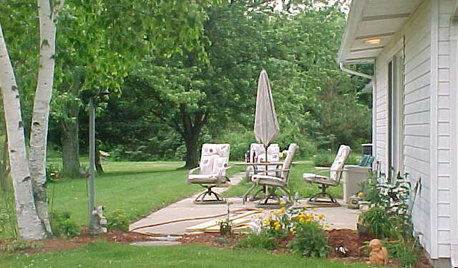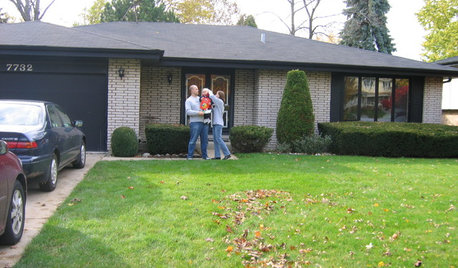Patio slab question
dinosaur1
13 years ago
Related Stories

GREEN BUILDINGConsidering Concrete Floors? 3 Green-Minded Questions to Ask
Learn what’s in your concrete and about sustainability to make a healthy choice for your home and the earth
Full Story
REMODELING GUIDESConsidering a Fixer-Upper? 15 Questions to Ask First
Learn about the hidden costs and treasures of older homes to avoid budget surprises and accidentally tossing valuable features
Full Story
DOORS5 Questions to Ask Before Installing a Barn Door
Find out whether that barn door you love is the right solution for your space
Full Story


5 Questions for Design Stars
Add Your Ideas for Outdoor Storage, Cheering Up a Fireplace and More
Full Story


REMODELING GUIDES13 Essential Questions to Ask Yourself Before Tackling a Renovation
No one knows you better than yourself, so to get the remodel you truly want, consider these questions first
Full Story
REMODELING GUIDES9 Hard Questions to Ask When Shopping for Stone
Learn all about stone sizes, cracks, color issues and more so problems don't chip away at your design happiness later
Full StoryMore Discussions








lehua49
dinosaur1Original Author
Related Professionals
Harrison Landscape Architects & Landscape Designers · Cornelius Landscape Contractors · Corona Landscape Contractors · Hilton Head Island Landscape Contractors · Indianapolis Landscape Contractors · Manhattan Landscape Contractors · Mastic Beach Landscape Contractors · Mequon Landscape Contractors · Spring Landscape Contractors · Tigard Landscape Contractors · Bellingham Decks, Patios & Outdoor Enclosures · Lake Morton-Berrydale Decks, Patios & Outdoor Enclosures · Owings Mills Decks, Patios & Outdoor Enclosures · Sugar Land Decks, Patios & Outdoor Enclosures · Wentzville Decks, Patios & Outdoor Enclosuresdinosaur1Original Author
duluthinbloomz4
dinosaur1Original Author
lehua49
laag
missingtheobvious
dinosaur1Original Author
dinosaur1Original Author
woodyoak zone 5 southern Ont., Canada
lehua49
dinosaur1Original Author
laag
dinosaur1Original Author
stormz4
dinosaur1Original Author
dinosaur1Original Author
dinosaur1Original Author
stormz4
laag
dinosaur1Original Author